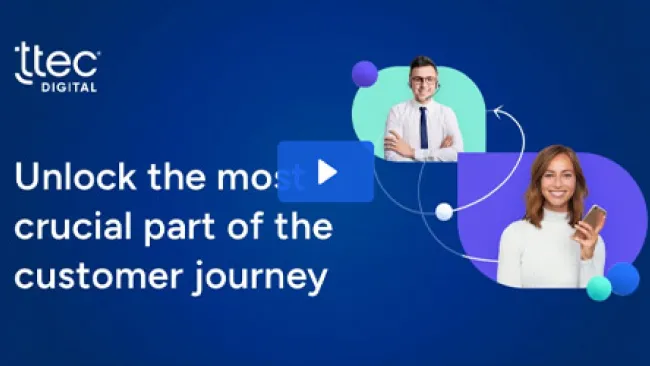Proactive outreach, preventative activities for at-risk customers, and individual attention can make a big difference to a customer’s relationship with a company. They also make a big difference to that company’s long-term bottom line. These tenets of customer experience have been proven time and again in a number of industries. Now, they’re beginning to resonate in the healthcare world. Health insurers are starting to consider the experience of a once overlooked constituency: consumers.
Provisions within the Affordable Care Act (ACA) have boosted consumer participation in their healthcare choices. In addition, as they reach Medicare eligibility, millions of Baby Boomers have the power to choose health plans and add-on services that best meet their needs. This converges with the “Amazon effect,” where consumers expect a higher and more personalized level of service from all companies. The result is a health insurance industry at a crossroads: improve the consumer experience or get out of the way.
CareMore focuses on individual well-being
There are pockets of customer centricity to be found within the health insurance industry. CareMore Health System is an integrated payer/provider system for the senior market, operating in California, Nevada, Arizona, and Virginia. The Wellpoint subsidiary delivers care and administers benefits in a unique framework that connects a number of important healthcare touchpoints. Senior Medical Officer Dr. George Fields explains that the company’s name is deliberate: its focus is on the holistic care of individual customers’ bodies, minds, and spirit. Besides traditional chronic care and acute care management, the firm also focuses on predictive modeling and early intervention. Proactive intervention, intimacy of contact, and speed of action help CareMore stand out from other payers. Fields points to a number of programs that execute its vision.
The company operates free neighborhood care centers, where members can go for simple care, like getting their toenails clipped. The centers also offer exercise classes, counseling services, and available medical and social worker staff. “It’s a second home for many people,” Fields says.
Its Healthy Start program for new members aligns physicians, social workers, family members, and insurance professionals to on-board new members and create an individualized treatment plan. The company is proactive with “healthy journey” yearly visits that track and compare patients’ overall well-being year over year.
And its integrated model allows communication and coordination across the entire continuum of care, leveraging electronic medical records, management techniques, and processes that scale individual interactions to its nearly 80,000 members, says Vish Sankaran, chief operating officer.
For example, the average new member comes to the plan with 10 medications, for no other reason than physicians and insurers tend to be siloed in their consumer interactions. With an individualized, patient-centric approach, Fields says typically CareMore can reduce it to six medications. In addition, something as simple as trimming patients’ toenails for free at the care center leads to fewer infections among diabetes patients, and therefore fewer hospital stays and amputations. It’s also common for employees to visit the homes of new and at-risk members to identify and fix potential fall risk factors like loose carpeting or poor lighting. This means fewer broken bones (particularly hips) among members. The plan also offers free transportation for members who can’t get to appointments on their own.
In addition to the benefits for members, “more care ends up saving money,” Fields says. “It’s too expensive not to invest in this type of care.” He points to data: CareMore members have an 11-12 percent re-admittance rate into hospitals after a procedure, compared to 19 percent for average Medicare patients. CareMore members are 50 percent less likely to have amputations than with Medicare alone. Kidney patients progress to stage 5 kidney failure within 5-6 years on Medicare, but in 24 years with CareMore. And, member obesity rates are much lower than the Medicare average. Fields says that a hospital visit is looked at as a failure on CareMore’s part. “We go out of our way to do what we can to prevent that failure in the first place.”
From a business perspective, CareMore is able to be generous in its care options because of its value-based business model. Sankaran explains that you have to follow the money. A value-based model, rather than a fee-for-service model, is more patient-centric and leads to long-term bottom-line health. “In the value-based world you need to know what’s going on so we can be proactive,” he says. As more health insurers and providers move to this model, he expects customer centricity will follow.
A change of perspective
If an entire transformational change isn’t realistic at the moment, even simple process improvements can go a long way to enhancing the consumer experience. Jonathan Harding, chief medical officer for senior products at Tufts Health Plan, said in a panel discussion at a recent conference of America’s Health Insurance Plans (AHIP), that the key to the industry’s success will be changing inward focus to put customers first. “You have to look at every process and see how you can change it to focus on the member,” he said.
Tufts created a cross-functional member experience team to fix inside-out processes that may have a negative impact on the consumer. For example, his group sent welcome letters to new members without any Tuft employee’s name at the bottom of the letter. He put his own name on it, so members would have an actual person to follow-up with if they had a question. Harding said he doesn’t mind getting calls from members as a result, and he connects them to the correct resource to solve their problem.
Also, compliance regulations mandate that Tufts write a letter to inform members of any denials. Employees were measured by how quickly they wrote each letter. As a result, the letters were “short and sweet,” with a denial message that left many members frustrated. Harding’s team changed the metrics so that employees could also include an alternative option to the issue being denied. Employees’ mindsets changed from a compliance focus to excitement about how they could help the customer, he said. It boosted member and employee satisfaction as a result.
The healthcare industry’s shift toward consumerism starts with looking at the industry through the consumer’s eyes. Once insurance companies do that, areas of improvement will naturally follow. With 2015 open enrollment on the horizon, it’s imperative that health insurers make this shift as soon as possible.
















